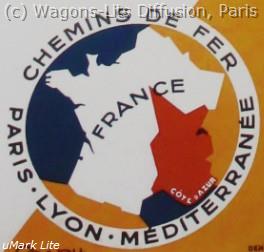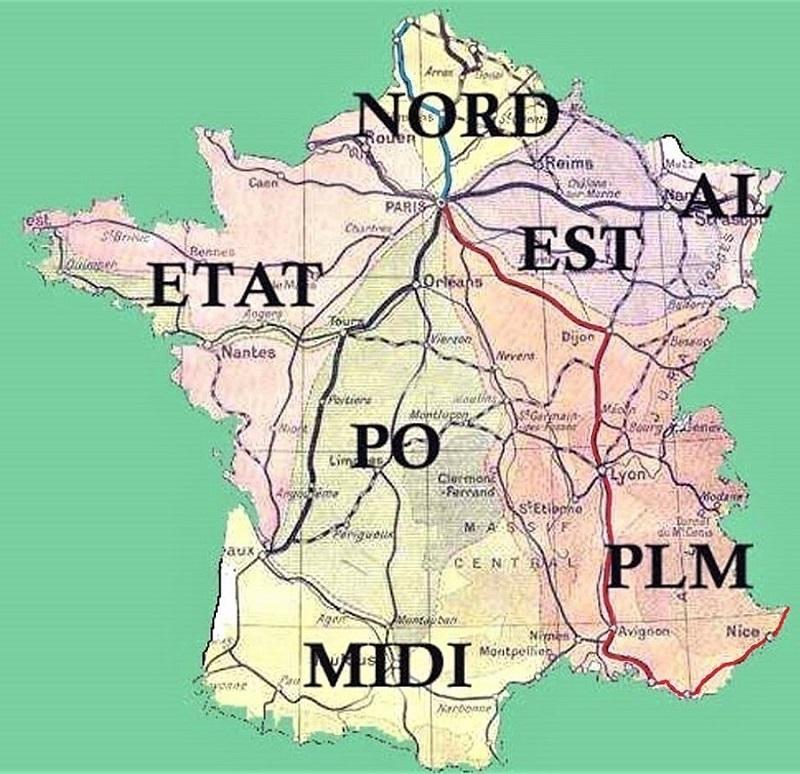

History of PLM / Paris-Lyon-Méditerranée company
The origins of PLM
As early as 1850, wealthy foreigners started to spend vacation in the French Riviera, later called ‘Côte d’Azur’. Notably rich Englishmen, Russian noble families and international travellers. The development of railway was key to massively attract this new clientele, who needed to travel to the South of France.
Paris-Lyon-Méditerranée railway, known as PLM, was created in 1857. It soon became the most important railway group in France, measured by passenger traffic and infrasctructure. Progressively, PLM expanded its network to the Alps resorts, helping the development of what became ‘the tourist’ industry.
With its network of railway and hotels, PLM was synonym to leisure travels to the French destinations of the Mediterranean and the French Alps. PLM main train station in Paris was the famous Gare de Lyon. During 80 years, PLM transformed France into a fashionable tourist destination for international travels, reducing distance et transforming the whole South East of France into the hot spot of nascent international tourism.
In 1938, following grave social unrest across all railway companies, the socialist government –called Front Populaire – decided to nationalize all French railway companies and infrastructure, marking the end of the upper class oriented PLM with the creation of SNCF state railway.
PLM SA was deprived of its railway activities, and continued to develop its touristic and hotel network across France and Europe. Listed on the French stock market, PLM became a leading hotel group in France, until the 1980s when it was taken by Compagnie des Wagons-Lits (CIWL), then by ACCOR, during a major takeover in 1991.
PLM famous advertising posters
At the turn of the XXth century, PLM launched massive advertising campaigns, selling to a large public the tourist resorts of the Alps and Côte d’Azur. These campaigns took the form of advertising poster, a modern and innovative media developed by Frédéric Hugo d’Alesi, a publisher who had developed the technology of multi-chrom lithography in 1886. These posters featured all aspects of touristic Provence. PLM tourist posters were published in more than 5 000 copies, shown in all European train stations and city boards.
From 1900 on, the most famous and innovative French artists were commissioned by PLM. Being selected by PLM to create these posters would ensure fame and glory to these artists, such was the reputation of excellence of PLM communication.
Still today, PLM poster collection is considered the most important tourist poster collection, both in scope and quality.
Entrance door to the Mediterranean and the Alps
If Côte d’Azur was synonym of wealthy travel destination until the beginning of the XXth century, it soon became more accessible to the middle class, thanks to the investments in infrastructure and modern hospitality made by PLM.
This impressive development was made possible by the development of improved steam railway and luxury trains uniting European capitals and reducing travel distances. Adding to this growing market, Compagnie des Wagons-Lits (CIWL) heavily relied on PLM locomotives and infrastructure to expand its most famous luxury trains, such as the Blue Train or the Simplon Orient Express. The history of PLM and CIWL became more and more intertwined.
A certain idea of tourism
Billboard publicity became a major marketing media at the turn of XXth. PLM massively adopted this communication media for its development strategy, targeted at French and international clientele. Touristic posters of the time still witness the representation commonly associated to luxury tourism in Côte d’Azur.
The process of building fantasy and desire consisted in showing representations and landscapes, which became familiar to the public. PLM posters contributed to anchoring familiar signs to collective imagination, stimulating the desire to travel.
Development of PLM hotels and touristic activities
In parallel to its railway activities, PLM invested in hotels and tourism activities (tour operating, bus companies, agency network) allowing to reach more remote destinations particularly in the –then underdeveloped Alps area. Thus actively participating in the economic boom of these beautiful regions.
After nationalisation of the railway activities in 1938, the Rothschild family invested in PLM hotels, becoming one the leading chains in France. Until PLM became part of CIWL in the 1980’s, CIWL itself being absorbed by ACCOR SA in 1991.
Collection of PLM poster collection
In order to advertise for its trains and hotels, PLM created one of the most important touristic poster collections in the world, commissioned to the most talented artists of the time. In return, PLM also actively contributed to these artists’ international fame. The most emblematic artist of PLM posters is definitely Roger Broders who spent most of his artist’s life under PLM contracts.
With more than 800 posters identified in our archives, PLM advertising posters contributed to the birth of the tourist industry in France, as well as helped create a romantic fantasy in the heart of most French and international travelers. Destinations such as Monaco, Antibes, Chamonix or Mont Blanc, among others became world class luxury resorts.
Wagons-Lits Diffusion manages the IP rights of PLM SA and maintains the database of all identified PLM posters ( 800 visuals).

French railways covering France until 1937
Until 1937, France was covered by 7 different private railway companies. PLM was the largest railway with more than 40% of the whole passenger traffic.









